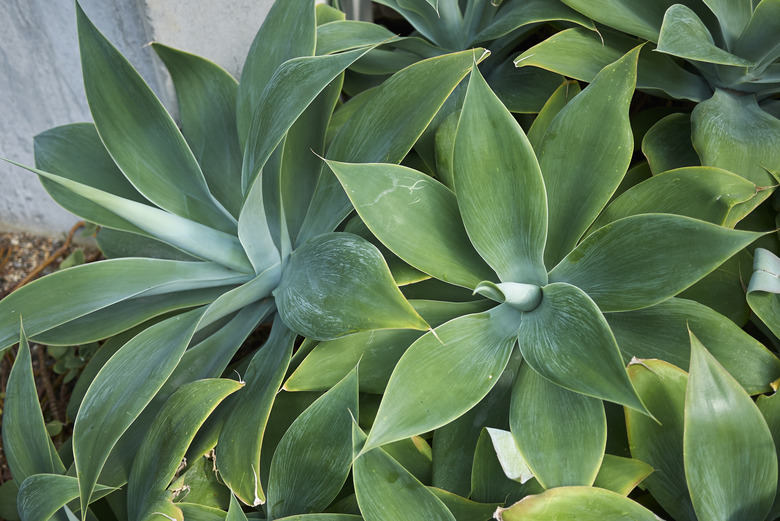Outdoor Plants That Look Like A Pineapple
We may receive a commission on purchases made from links.
Frost-free conditions, abundant sunshine, and regular water allow the pineapple plant to flourish. A bromeliad, the pineapple plant is a stiff-leaf herbaceous plant with a basal rosette of foliage. A distinguishing feature is the central tall flower stalk with prickly scales and bracts that becomes the golden tan fruit. A few other garden plants display a basal leaf form or singular flower stalk reminiscent of the pineapple, but closer inspection reveals it's not.
Other Bromeliad Plants
Other Bromeliad Plants
Thousands of other bromeliads closely related to the pineapple (Ananas comosus) exist. Some botanical genera of the bromeliad family display spiny, strap- to sword-like leaves and a plump flower stalk that resembles those of a pineapple. For example, plants in the genus Aechmea, Billbergia, Alcantarea, Bromelia, Quesnelia, and Guzmania look like differently sized and colored, ornamental pineapple plants.
Yucca Plant Species
Yucca Plant Species
There are some 40 different species of yucca (Yucca spp.). When not in flower display, some species have a rounded rosette of sword-shaped leaves like pineapples. Yucca foliage lacks spines on the leaf edges, but the leaf tips are usually pointy and sharp.
Spanish bayonet (Yucca aloifolia) in particular is often grown in arid gardens. Once its flower stalk emerges and displays scores of white bell-shaped flowers, it looks like a pineapple plant, although much larger and more ornate. Other yucca species have a similar form and flower stalk, so any could initially be confused with a pineapple by someone not well-versed in horticulture.
Aloe Vera Plants
Aloe Vera Plants
Many aloe plants are native to Africa but grown worldwide in gardens where frosts don't occur. There are about 380 species of aloe (Aloe spp.). When not in bloom, the fleshy, spiny leaves of aloe plants are held in a basal rosette like those of a pineapple plant. Clusters of aloes resemble a thicket of wild pineapples. Once the aloe blooms with upright stems topped with tubular yellow, red, or orange flowers, you know it's not related to the pineapple.
Century Plants or Agave
Century Plants or Agave
Century plants (Agave spp.) are native to dry lands of North America and many are quite tolerant of winter cold, even subfreezing temperatures. Century plant leaves are leathery and tough with spines. Each sword-like leaf radiates out from a base to make a globular shape.
Some century plants have a size that makes them look more pineapple-like. Plants about 24 inches tall and wide mimic a true pineapple. A tall, upright and sometimes erect flower spike emerges from the center of a century plant. Perhaps the yellow flowers of the foxtail century plant (Agave attenuata) look the most like a pineapple. Sisal (Agave sisalana) and the Cayman Island century plant (Agave sobolifera) look like large-sized pineapples when they're not in flower.
Red Hot Poker
Red Hot Poker
Native to southern Africa and often grown by gardeners in subfreezing winter regions is the red hot poker (Kniphofia spp.). These perennials form clumps of stiff leaves that are linear and often curving. When not in bloom, the foliage is unimpressive. The upright summertime flower stalks are striking with many tubular blossoms of red, orange, or creamy yellow. These flower clusters look like miniature colorful pineapples from a distance, giving your flower bed a burst of color.
Pineapple Lily Plants
Pineapple Lily Plants
This herbaceous perennial that grows from an underground bulb is called pineapple lily (Eucomis spp.) strictly because of its flower stalk. The leaves are green and strap-like, similar to those of an amaryllis. The erect flower stalk is topped by a tightly spaced group of starry blossoms that is topped by a leafy tuft of leaves, mocking the familiar look of the pineapple fruit. After the flowers wane, the seeds form, retaining the general look of a tiny pineapple on a stalk.
